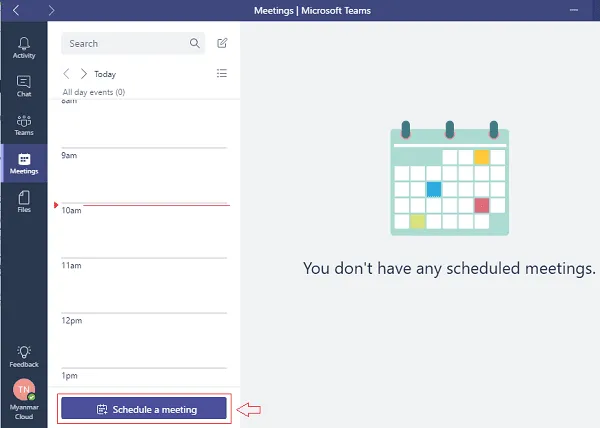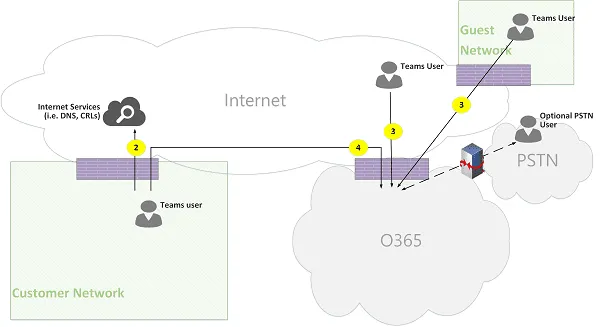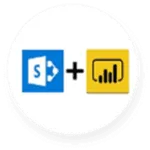PSTN Conferencing
Are you interested in increasing the productivity of your remote employees by allowing them to dial into a meeting using their phones? EPC Group will enable PSTN Audio Conferencing in Microsoft Teams with appropriate licenses.

What is PSTN Conferencing?

Back in the days, when there was no internet, people still used to get on conference calls. The only difference being, they used to connect using PSTN (Public Switched Telephone Network) audio conference calls. Moral of the story: people used to host and attend conference calls, without smartphones, without the internet, and without mobile apps.
Even though PSTN offers exceptional connectivity and audio, businesses were dependent on conferencing service providers. There used to be heavy or complex equipment that initiated the conferencing calls.
This equipment used to work by creating a bridge line having numerous phone numbers attached to them. The meeting participants needed to dial this bridge number to participate in the conference calls. Nevertheless, these bridge lines used to have a time limit, and participants were able to join conferences only if they dialed the bridge number when it was active.
The most prominent advantage of PSTN conferencing was allowing people to join using their landline or fixed-line phones. However, one disadvantage of was chaos and confusion caused due to several participants dialing in the conference number at once. Besides, businesses needed to pay handsome amounts to the local carriers for PSTN services. No wonder it was supposed to be a luxury to be able to have PSTN conferencing.

PSTN Conferencing in Microsoft Teams
The Modern Alternative
- PSTN conferencing in Microsoft Teams is possible by enabling the audio-conferencing feature in Microsoft 365. It allows up to 1000 attendees to join the audio conference.
- Audio/Video conferencing is enormously essential for an organization to ensure everyone working inside and outside the office can attend the meeting using a dial-in number or a Microsoft Teams app present on their device.
- PSTN conferencing is a better option when the meeting is audio-only. Else, when attendees face internet connectivity issues or are unable to join the meeting using mobile apps.
- The PSTN conferencing offers an exceptional quality of audio. Besides, attendees get an option to join the meeting using a hands-free accessory like Bluetooth devices, and a dial-in number is much more convenient and easier.
- The audio-conferencing licenses are limited to hosts scheduling the meeting or leading the meeting. Attendees do not need any license or have to pay for joining the PSTN conferencing.
- Attendees have an option to add other people by dialing out or inviting them to join the meeting.
- After enabling audio conferencing in MS Teams, toll service numbers automatically get assigned as shared audio-conferencing numbers to schedulers. It allows the users or attendees to join the conference by dialing in toll or toll-free numbers.
- If necessary, dedicated toll and toll-free numbers can also be assigned to the organizers from additional cities.
To activate PSTN conferencing in Microsoft Teams, you need to purchase an Audio-Conferencing license per user in the organization hosting to host or schedule a meeting.

How PSTN Conferencing Works in Microsoft Teams
- It’s easy to set up audio conferencing in Microsoft Teams. Go to conferencing bridge (the conferencing bridge usually contains more than one phone number) and set your phone number. That phone number will act as a dial-in number for attending the meeting or PSTN conferences.
- The audio-conferencing bridge works by answering calls from people dialing in the number from their phone to attend the meeting.
- An auto-attendant answers every dial-in call, and as per your settings, voice prompts offer guidelines and notifications to proceed with attending the meeting.
- For enhancing the meeting experience, users have an option to change the meeting notification settings. Also, they could decide the length of PIN necessary to join the meeting through Microsoft bridge settings.
- You can assign two types of numbers for PSTN Conferencing to the conferencing bridge; Shared and Dedicated. Users can join the meeting by dialing in any of these two numbers.
- Dedicated numbers are generated for attendees within the organization, and shared phone numbers are for other users.
- Shared conferencing numbers get automatically assigned when users enable audio conferencing. While doing so, MS Teams assigns a specific phone number as a default number for conferencing bridge, and it is often one from the country of the organization.

Why Your Business Needs PSTN Conferencing?
Since COVID-19 forced many of us to work from home, we became accustomed to using video and audio-conferencing tools like Microsoft Teams. It gave us an easy opportunity to collaborate and communicate with our colleagues, clients, and customers alike.
Many people jump on conference calls using VoIP through their laptops, mobile phones, desktop audio systems. Yet, some people do not have an option but to join using a landline. PSTN conferencing in Microsoft Teams thus comes in handy in such situations.
PSTN conferencing allows more than one person to attend a meeting from anywhere using a landline or PSTN phone.
Enabling PSTN conferencing in Microsoft Teams is cost-efficient,
- If your organization has Office 365 E5 license, PSTN conferencing is already included in the suit. However, it excludes the specific E5 SKU needed for PSTN audio conferencing.
- If your organization possesses Office 365 E1 or E3 licenses, you get Audio Conferencing as standard for a $4.00/month add-on per user. Else, you need to enable Pay Per Minute PSTN audio conferencing.
- You do have an option to add Telephony and PSTN audio conferencing with Business Voice SKU if your organization has less than 300 users and using one of the SME Office 365 Business SKUs or E3.
Remember, an organization needs to activate PSTN audio conferencing license only for selected users scheduling meetings. Attendees do not have to pay to join the meeting. Besides, other users in the same tenant can opt for the standard license and Pay Per minute (PPM) license.

EPC Group – Leading PSTN Conferencing Consultation Provider
EPC Group is a Microsoft Gold Certified Partner and is in business for the last 24 years. Since its inception, EPC is helping global enterprises to adopt technology and solutions intended to empower their remote workers and enhance their productivity.
Microsoft Teams is a leading audio/video communication and collaboration tool. We ensure successful deployment and migration that enables seamless communication between on-site and virtual teams. EPC Group has a team of highly experienced and certified Microsoft Teams consultants. They help organizations leverage the latest features, tools, and functionalities in MS Teams.
- Our team will work with you to expand the capability of Microsoft Teams, so you can not only make and receive PSTN calls, but you will be able to host PSTN conferences and allow users to join using their landline phone.
- Our MS Teams consultants will facilitate licensing options in Microsoft 365 necessary for enabling audio conferencing features in your Microsoft Teams. They will also help in selecting the appropriate Microsoft Calling Plans to upgrade your business telephony.
- Our PSTN consulting services will simplify PSTN conferencing for your organization and unify global phone systems with several options at your disposal.
Our Value Addition Services
Get customized service solutions for every business need
Microsoft Teams - Get Your Work Done
We bring teams together anytime, anywhere.
Why Choose Us
Why Organizations Recognize EPC Group's Consulting Services as the Industry Leader

EPC Group wrote the book on SharePoint & Power BI

Microsoft Partner for 25+ Years
Over 4 million Office 365 users successfully migrated
200+ years combined senior team migration experience




